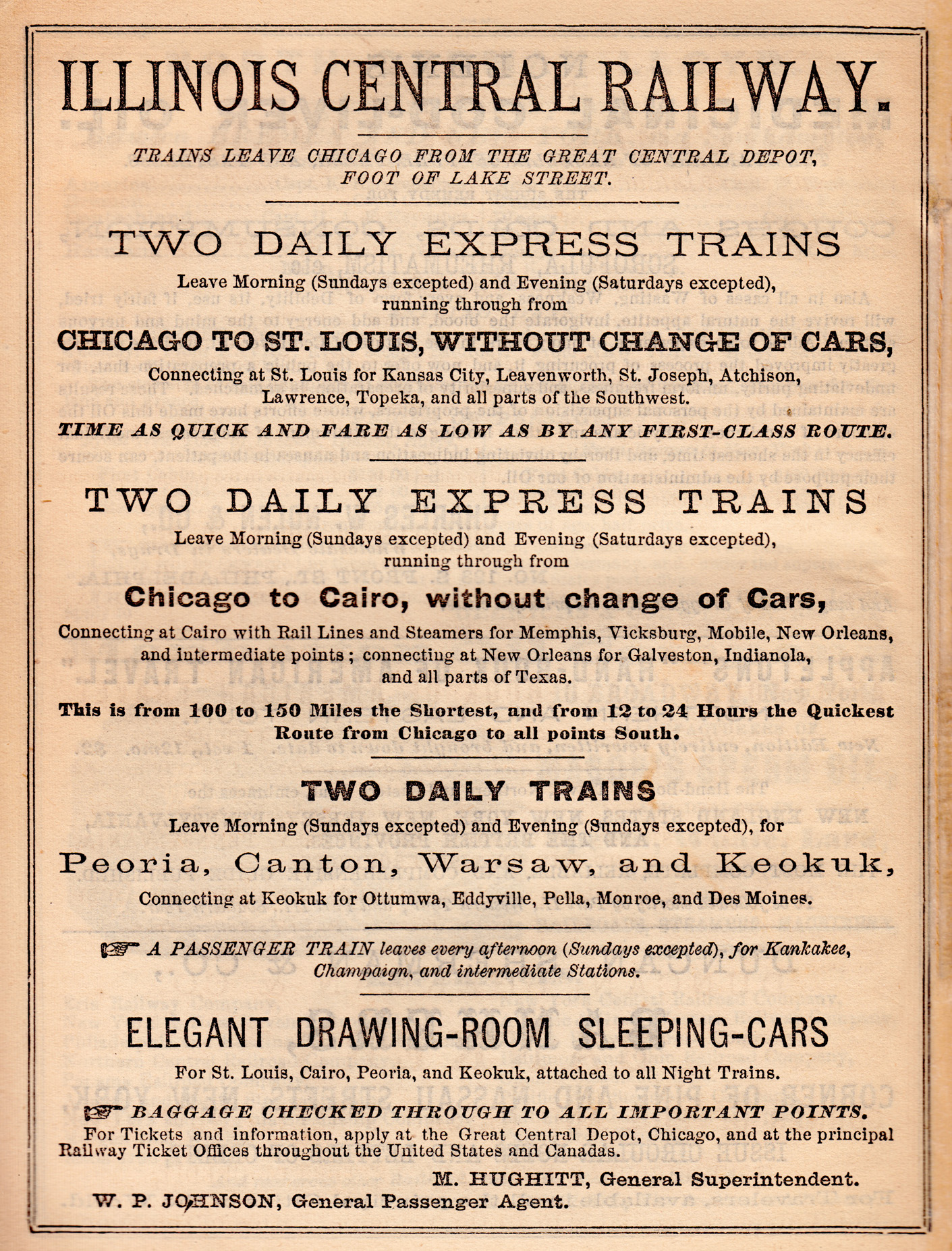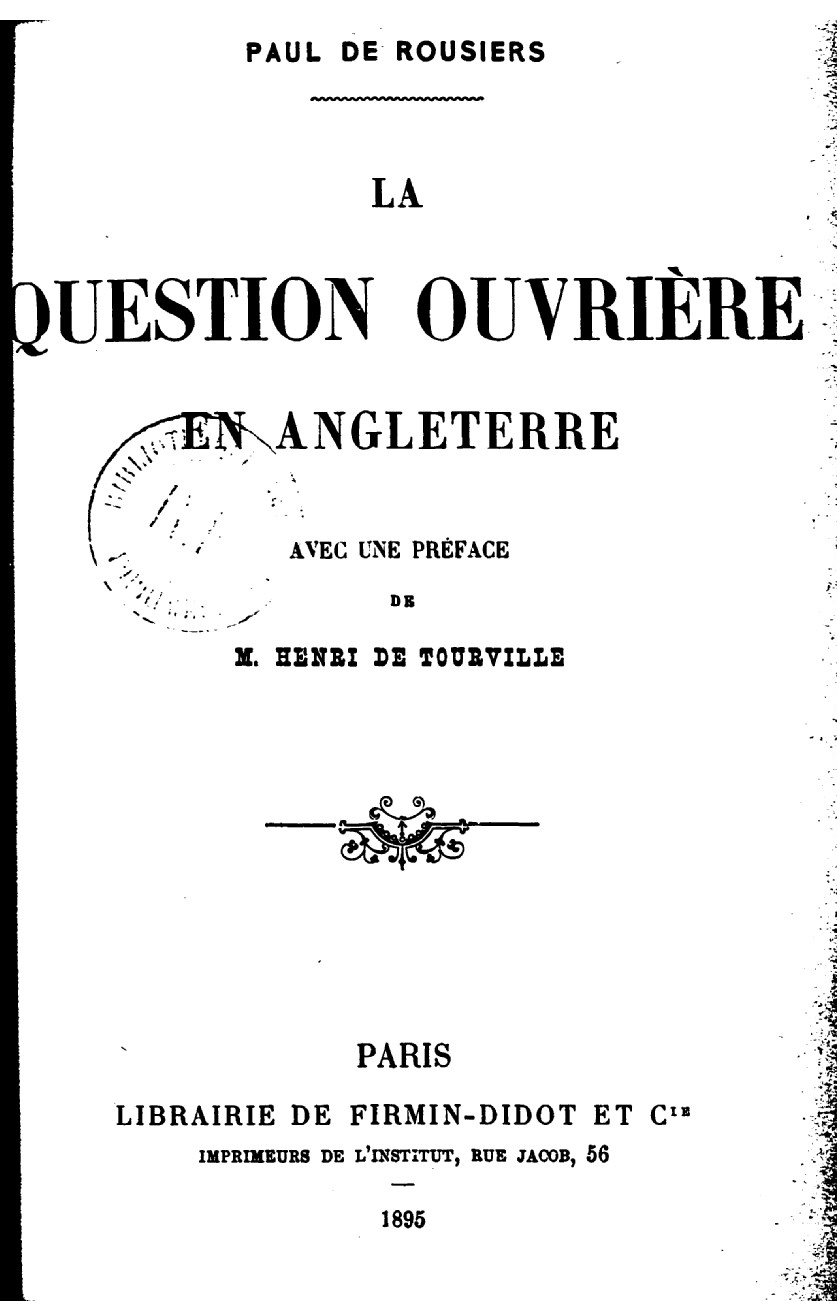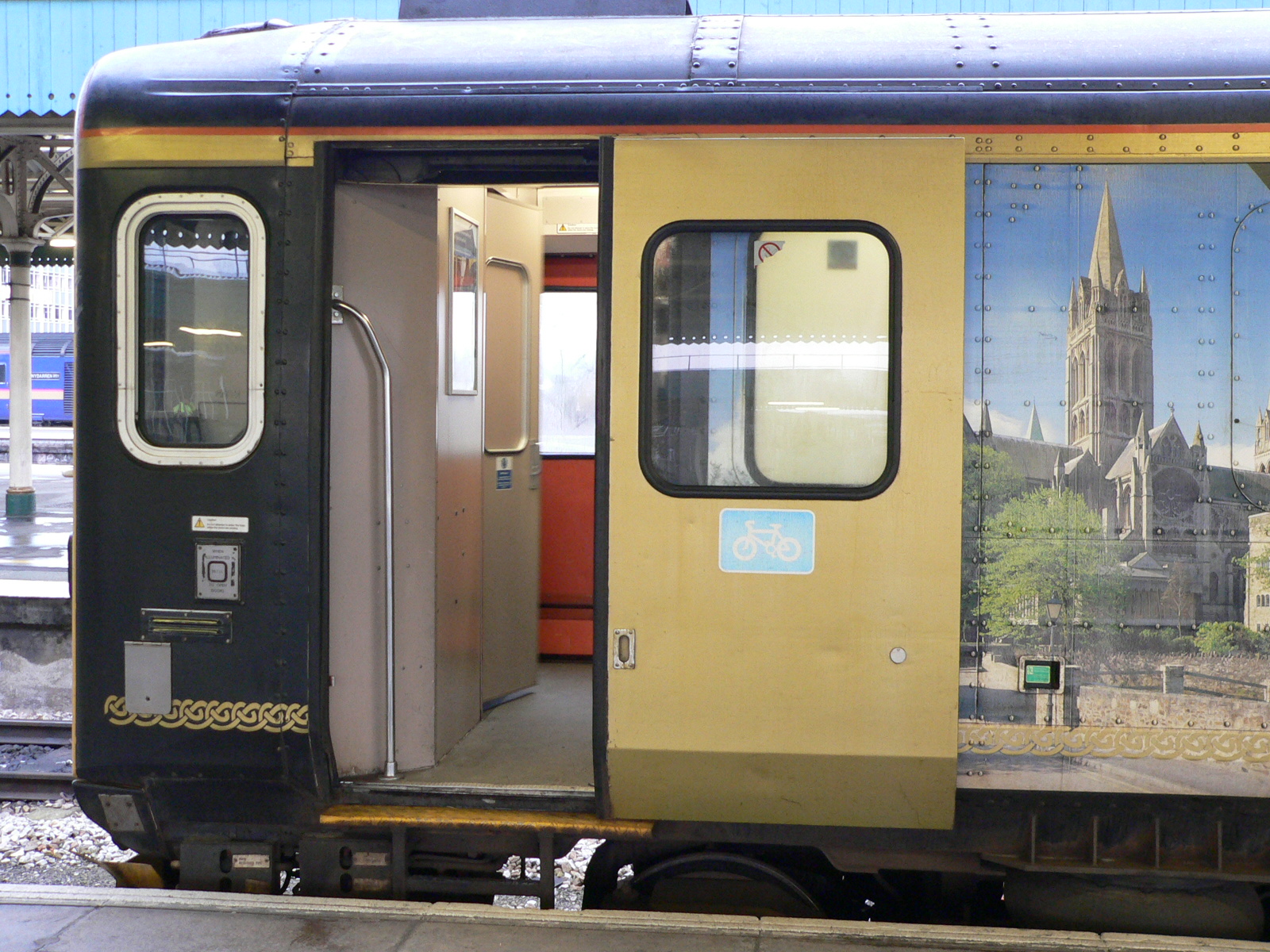|
George Mortimer Pullman
George Mortimer Pullman (March 3, 1831 – October 19, 1897) was an American engineer and industrialist. He designed and manufactured the Pullman sleeping car and founded a company town, Pullman, for the workers who manufactured it. This ultimately led to the Pullman Strike due to the high rent prices charged for company housing and low wages paid by the Pullman Company. His Pullman Company also hired African-American men to staff the Pullman cars, known as Pullman porters, who provided elite service and were compensated only in tips. Struggling to maintain profitability during an 1894 downturn in manufacturing demand, he halved wages and required workers to spend long hours at the plant, but did not lower prices of rents and goods in his company town. He gained presidential support by Grover Cleveland for the use of federal military troops which left 30 strikers dead in the violent suppression of workers there to end the Pullman Strike of 1894. A national commission was appoi ... [...More Info...] [...Related Items...] OR: [Wikipedia] [Google] [Baidu] |
Brocton, New York
Brocton is a village in Chautauqua County, New York, United States. The name was derived by combining the names "Brockway" and "Minton", two prominent local families. The population was 1,335 at the 2020 census. Brocton is within the town of Portland. The Lakeview Shock Incarceration Correctional Facility, a state prison, is located just north of the village limits. History The community was first settled in 1805 by Captain James Dunn. The village of Brocton was incorporated in 1894. Brocton used to be named "Salems Corners (Cross Roads)" after Salem, Massachusetts, but was later renamed "Brocton". In 1913, to commemorate the town of Portland's Centennial, a green double-arch was erected over the town's main intersection. It is believed to be the only double-arch east of the Mississippi River. It was listed on the National Register of Historic Places in 1996. The St. Stephen's Hotel has been a fixture at the center of Brocton since the mid-1800s. Brocton Central School The B ... [...More Info...] [...Related Items...] OR: [Wikipedia] [Google] [Baidu] |
Delmonico's Restaurant
Delmonico's is the name of a series of restaurants that operated in New York City, with the present version located at 56 Beaver Street in the Financial District of Manhattan. The original version was widely recognized as the United States’ first fine dining restaurant. Beginning as a small cafe and pastry shop in 1827, Delmonico’s eventually grew into a hospitality empire that encompassed several luxury restaurants catering to titans of industry, the political elite and cultural luminaries. In many respects, Delmonico’s represented the genesis of American fine dining cuisine, pioneering numerous restaurant innovations, developing iconic American dishes, and setting a standard for dining excellence. Ultimately, Delmonico’s under the Delmonico family closed in 1923. History Origin The original Delmonico's opened in 1827 in a rented pastry shop at 23 William Street, and appeared in a list of restaurants in 1830. It was opened by Italian-Swiss immigrants, the brother ... [...More Info...] [...Related Items...] OR: [Wikipedia] [Google] [Baidu] |
World's Columbian Exposition
The World's Columbian Exposition (also known as the Chicago World's Fair) was a world's fair held in Chicago (''City in a Garden''); I Will , image_map = , map_caption = Interactive Map of Chicago , coordinates = , coordinates_footnotes = , subdivision_type = Country , subdivision_name ... in 1893 to celebrate the 400th anniversary of Christopher Columbus's arrival in the New World in 1492. The centerpiece of the Fair, held in Jackson Park (Chicago), Jackson Park, was a large water pool representing the voyage Columbus took to the New World. Chicago had won the right to host the fair over several other cities, including New York City, Washington, D.C., and St. Louis. The exposition was an influential social and cultural event and had a profound effect on American Architecture of the United States, architecture, the arts, American industrial optimism, and Chicago's image. The layout of the Chicago Columbian E ... [...More Info...] [...Related Items...] OR: [Wikipedia] [Google] [Baidu] |
Hotel Florence
The Hotel Florence is a former hotel located in the Pullman Historic District on the far south side of Chicago, Illinois. It was built in 1881 to a design by architect Solon Spencer Beman. Since 1991, it has been owned by the Illinois Historic Preservation Agency. History The years following the American Civil War saw the growth of a new profession—that of ''drummer'' or traveling salesman. The traveling salesman was often assigned a "territory" or quota of sales calls to make that necessitated traveling day and night by train when in the field. In order to meet the needs of traveling salesmen and other nighttime travelers, Chicago inventor George Pullman helped to invent the sleeping car, a railroad passenger car whose seats could be converted into sleeping bunks. The Pullman sleeping car was enormously successful. Many railroads preferred the Pullman design to other sleeping cars because of the efforts George Pullman and his employees put into standardizing their manufact ... [...More Info...] [...Related Items...] OR: [Wikipedia] [Google] [Baidu] |
Solon Spencer Beman
Solon Spencer Beman (October 1, 1853 – April 23, 1914) was an American architect based in Chicago, Illinois and best known as the architect of the Urban planning, planned Pullman, Chicago, Pullman community and adjacent Pullman Company factory complex, as well as Chicago's renowned Fine Arts Building (Chicago), Fine Arts Building. Several of his other largest commissions, including the Pullman Office Building, Pabst Building, and Grand Central Station (Chicago), Grand Central Station in Chicago, have since been demolished. Beman designed numerous Christian Science churches and influenced the design of countless more. Career Beman was born in the borough of Brooklyn in New York City, New York, to a father who was fascinated with architecture and who maintained an extensive collection of books on the subject. Encouraged by his father, in 1870 Beman began his architectural training at 17 in the office of New York architect Richard Upjohn, best known for his religious designs in ... [...More Info...] [...Related Items...] OR: [Wikipedia] [Google] [Baidu] |
Illinois Central
The Illinois Central Railroad , sometimes called the Main Line of Mid-America, was a railroad in the Central United States, with its primary routes connecting Chicago, Illinois, with New Orleans, Louisiana, and Mobile, Alabama. A line also connected Chicago with Sioux City, Iowa (1870). There was a significant branch to Omaha, Nebraska (1899), west of Fort Dodge, Iowa, and another branch reaching Sioux Falls, South Dakota (1877), starting from Cherokee, Iowa. The Sioux Falls branch has been abandoned in its entirety. The Canadian National Railway acquired control of the IC in 1998, and merged its operations in 1999. Illinois Central continues to exist as a paper railroad. History The IC was one of the oldest Class I railroads in the United States. The company was incorporated by the Illinois General Assembly on January 16, 1836. Within a few months Rep. Zadok Casey (D-Illinois) introduced a bill in the U.S. House of Representatives authorizing a land grant to the company to ... [...More Info...] [...Related Items...] OR: [Wikipedia] [Google] [Baidu] |
Lake Calumet
Lake Calumet is the largest body of water within the city of Chicago. Formerly a shallow, postglacial lake draining into Lake Michigan, it has been changed beyond recognition by industrial redevelopment and decay. Parts of the lake have been dredged, and other parts reshaped by landfill. Together with the rest of the city of Chicago, the remnant of the lake now drains into the Des Plaines River and the Mississippi River basin via the Cal-Sag Channel and the Chicago Sanitary and Ship Canal. ''Calumet'' is a Norman word used since the 17th century by French colonists in Canada for the ceremonial pipes they saw used by First Nations peoples. History Until the 1800s, Lake Calumet was near the center of an extensive wetland area near the southern tip of Lake Michigan. Like other wetland areas, the Lake Calumet area and its rivers were a center of Native American life and settlement. In 1861, the Lake Calumet region was mapped into Hyde Park Township, south of what was then t ... [...More Info...] [...Related Items...] OR: [Wikipedia] [Google] [Baidu] |
Pullman Chicago Clock Tower
Pullman may refer to: Places in the United States *Pullman, Chicago, Illinois *Pullman, Michigan *Pullman, Texas *Pullman, Washington *Pullman, West Virginia * Pullman Lake, a lake in Minnesota * Pullman neighborhood, in the city of Richmond, California Surname * Alberte Pullman (1920–2011), theoretical and quantum chemist, wife of Bernard *Alfred Pullman (1916–1954), a British soldier and airman * Bernard Pullman (1919–1996), theoretical and quantum chemist, husband of Alberte * Bill Pullman (born 1953), American actor * George Pullman (1831–1897), founder of the Pullman Company * Joe Pullman (1876–1955), Wales international rugby union player * Lewis Pullman (born 1993), American actor * Philip Pullman (born 1946), English writer * Simon Pullman (1890–1942), violinist and founder of the Warsaw Ghetto Symphony Orchestra Transport Road * Humber Pullman, a large automobile manufactured in central England between 1930 and 1954 * Mercedes-Maybach S600 Pullman Guard, Ger ... [...More Info...] [...Related Items...] OR: [Wikipedia] [Google] [Baidu] |
Paul De Rousiers
Paul de Rousiers (16 January 1857 – 28 March 1934) was a French social economist and industrial lobbyist. He was a follower of Pierre Guillaume Frédéric le Play, and believed in industrial syndicates that would be independent of both workers and owners, and would be dedicated to the progress of their industries. He undertook studies of society and economic organization in the United States, Britain and Germany, where he visited the rural areas, towns, cities, farms, mines and factories, and spoke to workers, owners, politicians and intellectuals to gain an understanding of the interplay of social and economic forces. His work gained him considerable respect. In 1903 Paul de Rousiers became secretary-general of the French shipowners' association, a position he held for most of the rest of his life. In this role he proved a highly effective lobbyist. He also provided valuable information and legal services to the members, and helped in their negotiations with trade unions. He rem ... [...More Info...] [...Related Items...] OR: [Wikipedia] [Google] [Baidu] |
Pennsylvania Railroad
The Pennsylvania Railroad (reporting mark PRR), legal name The Pennsylvania Railroad Company also known as the "Pennsy", was an American Class I railroad that was established in 1846 and headquartered in Philadelphia, Pennsylvania. It was named for the commonwealth in which it was established. By 1882, Pennsylvania Railroad had become the largest railroad (by traffic and revenue), the largest transportation enterprise, and the largest corporation in the world. Its budget was second only to the U.S. government. Over the years, it acquired, merged with, or owned part of at least 800 other rail lines and companies. At the end of 1926, it operated of rail line;This mileage includes companies independently operated. PRR miles of all tracks, which includes first (or main), second, third, fourth, and sidings, totalled 28,040.49 at the end of 1926. in the 1920s, it carried nearly three times the traffic as other railroads of comparable length, such as the Union Pacific and Atchison, T ... [...More Info...] [...Related Items...] OR: [Wikipedia] [Google] [Baidu] |
Gangway Connection
A gangway connection (or, more loosely, a corridor connection) is a flexible connector fitted to the end of a railway coach, enabling passengers to move from one coach to another without danger of falling from the train. Origins: Coaches in British and American railways The London and North Western Railway (LNWR) was the first British railway to provide passengers with the means to move from one coach to another while the train was in motion. In 1869 the LNWR built a pair of saloons for the use of Queen Victoria; these had six-wheel underframes (the bogie coach did not appear in Britain until 1874), and the gangway was fitted to only one end of each coach. The Queen preferred to wait until the train had stopped before using the gangway. In 1887, George M. Pullman introduced his patented vestibule cars. Older railroad cars had open platforms at their ends, which were used both for joining and leaving the train, but could also be used to step from one car to the next. This prac ... [...More Info...] [...Related Items...] OR: [Wikipedia] [Google] [Baidu] |
Vestibuled Train
A vestibuled train is a passenger train whose cars have enclosed vestibules at their ends, in contrast to the open platforms on early cars. Typically, a vestibule has doorways on either side to allow passenger entry and exit at stations, a door into the body of the car, and, at the car end, a doorway to allow access to the next car through a flexible gangway connection. History The first vestibuled train was introduced on June 15, 1887, on the inaugural run of the ''Pennsylvania Limited'' of the Pennsylvania Railroad, forerunner of the famous ''Broadway Limited''. The railway car vestibule as a concept had been tried in various primitive forms during the latter part of the 19th century, but the first viable form was invented by H. H. Sessions and his staff at the Pullman Car Works in Chicago. Sessions' patent was challenged by others and reduced in litigation to the spring mechanism of his vestibule design. Further litigation by Pullman was successful in modifying the earli ... [...More Info...] [...Related Items...] OR: [Wikipedia] [Google] [Baidu] |
.jpg)







